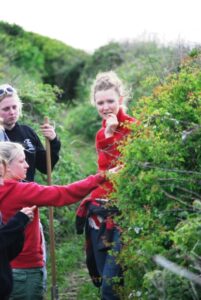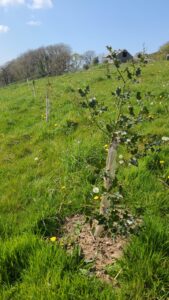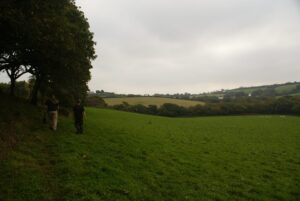Pasture Champions: Woodland Valley Farm 3/3
What are the benefits to the farm and is it increasing its climate and business resilience? If so, in what way?
The benefits to the farm are that we are producing food in harmony with the environment, and in a way that gives the best chance of nature’s recovery.
I have no illusions about the challenge of getting everyone to farm in this way, and indeed that cannot be as we will still need crops for human consumption, but I am hopeful that with time the value of livestock as a part of arable systems will be recognised even on the best of land.
The process is already under way as inputs and energy become more expensive, and as the climate emergency bites. In the end, our food has to be a by-product of healthy ecosystem.
How do you monitor it?
We monitor biodiversity in an informal partnership with Exeter University, Duchy college, and a number of local wildlife groups and naturalists.
 Foraging the fruits of a biodiverse landscape
Foraging the fruits of a biodiverse landscape
Our soil can support combinable crops, when grown in a rotation with grass. But we only have a weather year that supports those crops when grown organically perhaps one year in 6. Most years we would need to expend a lot of gas to dry the crop for sale or storage, and most years we would not be able to grow combinable crops of a quality to feed people. Our cattle need no hard feed, and are not adapted to consume it, although they can, and would perhaps grow a little faster.
We could grow commercial brassicas or potatoes, but organically at scale this is far-fetched and emits a very large amount of carbon in cultivations, and soil in wet weather.
For a number of reasons we have devoted one small field to allotments. So in terms of food production, we have options to grow tree crops, or ruminants, and not much else.
As mentioned before we have now commenced creating wood pasture with a range of species including some nut and fruit trees, which will complement ruminant production.
 Establishing wood pasture
Establishing wood pasture
What lessons have you learned and would like to share?
The main lesson I can pass on is to make mistakes, it is how one learns.
‘Live as if we’ll die tomorrow, but farm as if we’ll live forever’.
 Walking the land
Walking the land



